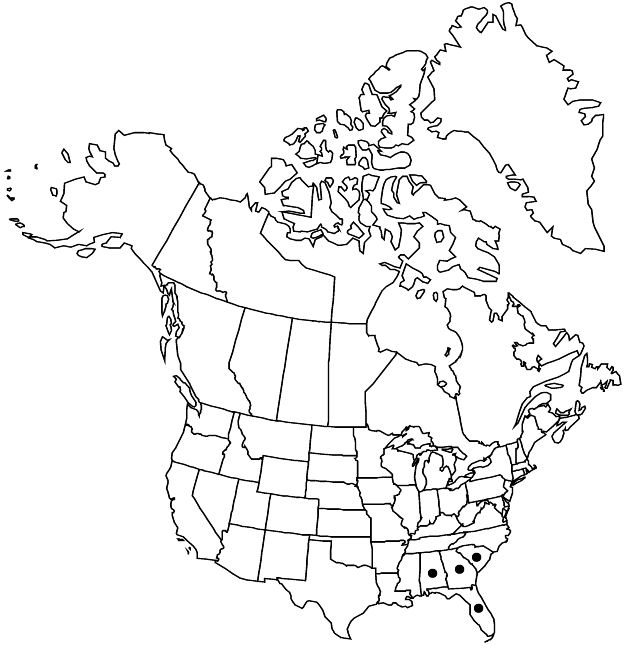Prunus serotina var. alabamensis
Phytologia 4: 309. 1953.
Twigs hairy, often densely so, hairs rusty brown. Leaves: petiole 2–12 mm, hairy to glabrate, glandular at petiole-blade junction, glands 2; blade elliptic to obovate, 3–12.5 × 2–6.5 cm, ± leathery, apex usually obtuse, rounded, or emarginate, sometimes abruptly acute or short-acuminate, abaxial surface sparsely hairy, especially along midribs and proximally. Inflorescences: rachises 50–160 mm.
Phenology: Flowering Apr–May; fruiting Jun–Aug.
Habitat: Rocky slopes and ridges, sandhills, mixed oak-pine-hickory forests
Elevation: 20–700 m
Distribution

Ala., Fla., Ga., S.C.
Discussion
Variety alabamensis has obovate leaf blades, much broader than var. serotina. The apices are usually obtuse, rounded, or rounded-emarginate, sometimes short-acute or short-acuminate. Branchlets and, sometimes, raceme axes are rusty-hairy; abaxial surfaces of leaf blades have scattered, rusty hairs. The trees are said to leaf out two weeks later than var. serotina and to hold their leaves much longer in the fall (C. L. Brown and L. K. Kirkman 1990).
Selected References
None.